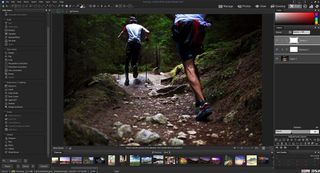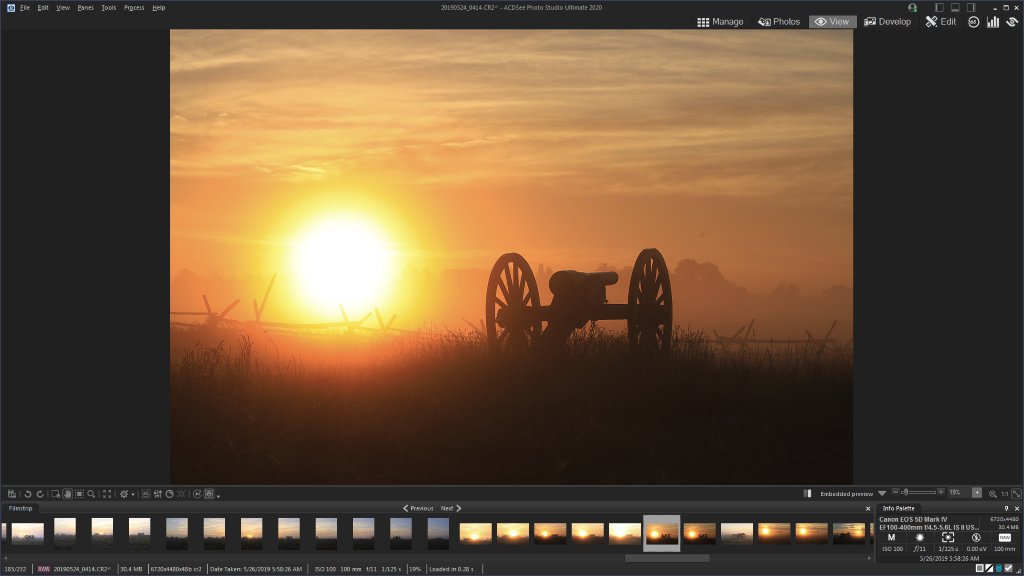
- #Acdsee Review 2020 License With One
- #Acdsee Review 2020 Plus New Color
- #Acdsee Review 2020 Free Rivals To

Acdsee Review 2020 Free Rivals To
In the interest of readability, I'm not going to try to cover every feature of Photo Studio Ultimate in this review. It also includes some that Lightroom lacks, the most notable of which is support for layer-based editing.Photo Studio Ultimate is a comprehensive digital darkroom tool. A fully-featured image management and editing tool aimed specifically at photographers, Photo Studio Ultimate 2021 provides most of the same core features as its Adobe rival. After publishing every one of those reviews, I heard from readers praising ACDSee Photo Studio Ultimate, a Windows-only Lightroom alternative that allows you to forego a subscription.It's been many years since we last took a look at ACDSee, but clearly, it's time we rectified that. Rar.Over the past couple of years, I've reviewed several subscription-free rivals to Adobe Lightroom, including DxO PhotoLab 4, Exposure Software's Exposure X6 and Phase One's Capture One 20.
Acdsee Review 2020 License With One
Comprehensive image management and editing Affordable perpetual license with one year of updates or a choice of two subscription plans Users who purchase the 2021 edition will be eligible for a free upgrade. According to ACDSee, the updated version includes a new Media mode for efficiently viewing and managing folders and media, a new People mode that uses an improved AI engine to recognize faces, and some new selection tools. Click through to the gallery to see full resolution images.Editor's note: Just days before publishing this review, ACDSee announced Photo Studio Ultimate 2022, to be released at the end of September. Let's roll up our sleeves and get right down to it!ACDSee's default rendering compared with that of its main rival, Adobe Lightroom Classic.
These differ only in their limits on cloud storage and the number of concurrent installs allowed. A bit buggy and the learning curve can be steepACDSee Photo Studio Ultimate 2021 is available for $149.95 for a lifetime license with one year of updates and technical support, which will include a free upgrade to the 2022 release once it launches.Two subscription plans are also available, which include licenses for ACDSee for Mac 7, Luxea Video Editor, and Video Converter Pro 5. Extremely fast, even with large image collections Broad support for cameras/backs, but lacks Lightroom's mobile/drone support. Layers support, automatic lens correction and (somewhat error-prone) face recognition
Acdsee Review 2020 Plus New Color
These include an updated UI for Develop mode, which adds a new right-hand pane that's home to a histogram, develop presets, history/snapshots, an info palette, plus new color and tone wheels in the left pane.The updated Develop mode user interface now has a second pane at screen right. The company says that its 2021 release can start up to 100% faster, switch modes 50% faster, categorize and keyword 100% faster, decode raw files 20% more quickly, and has 40% better database performance.There are also some notable tweaks to the user interface and tools on offer. Probably the most noticeable difference – and the biggest reason to upgrade if you're using an older, perpetually licensed version of ACDSee – will be the performance gains. The Home plan is priced at either $8.90 per month, or $89 per year, and includes 50GB of cloud storage with support for up to five installs.Let's review what's new for those already familiar with ACDSee.

ACDSee Actions – essentially short scripts combining multiple processing steps into a single click -–can be applied, or multiple images loaded into stacks or processed to create an HDR or focus-stacked image. You can also view or edit metadata, add tags, ratings or labels, and images or videos can be categorized or added to collections.Additionally, you can view geotagged images on a map or add locations to those that aren't geotagged. There's a choice of several view types, including thumbnails or a film strip beneath a larger preview.
(To differentiate videos from stills, the other modes show them as groups of four smaller thumbnails taken from various points in the video clip.)There's also an Actions Browser pane for still images that allows you to visually preview the expected results of each action on your selected image before you apply it. It's also the only mode to allow you to actually play videos, rather than seeing them as static thumbnails. The highlighted image appears if you hover your mouse pointer over a thumbnail.This mode is similar to the filmstrip view in Manage mode, except most visual clutter is removed or disabled. You can only access relatively small thumbnail views of your content.Photos mode allows only small thumbnail views and gives a choice of daily, monthly, or yearly indices. You have a choice of daily, monthly, or yearly views and can also select folders you'd like to scan for content.There's not much you can do in this mode other than rotating images or selecting an individual image to open in one of the other modes.
For example, instead of the Shadows slider found in Lightroom, ACDSee features a Fill Light slider, and white balance controls have their own panel. Here, I've applied the Punch preset from the Portrait group and then dialed the contrast back slightly, as you can see in the History panel near the bottom right corner.Most of the basic options are similar to those you'd find in Lightroom, although there are some differences in how they're named or located. If you open too many, another panel will simultaneously close to make room for it, preventing you from having to scroll up and down the pane.The Develop mode is where you'll do most of your editing work. Develop mode's adjustments are non-destructive and saved to XMP sidecar files as well as the ACDSee database.Depending upon the size of each panel within the pane, you can mostly have only two open at once, although for a couple of bigger or smaller panes, that number increases or decreases. By default – the interface being very customizable – the sliders with which you'll make your adjustments are grouped in a pane at the left of the screen. By default, it lacks sidebars, but I've enabled the right bar so you can see the Organize tab of the Properties pane.View mode also gives you access to the Actions browser, through which you can preview the results of individual ACDSee Actions scripts as thumbnails and a larger single-image preview.Develop mode is where you'll be doing the bulk of your editing.


 0 kommentar(er)
0 kommentar(er)
